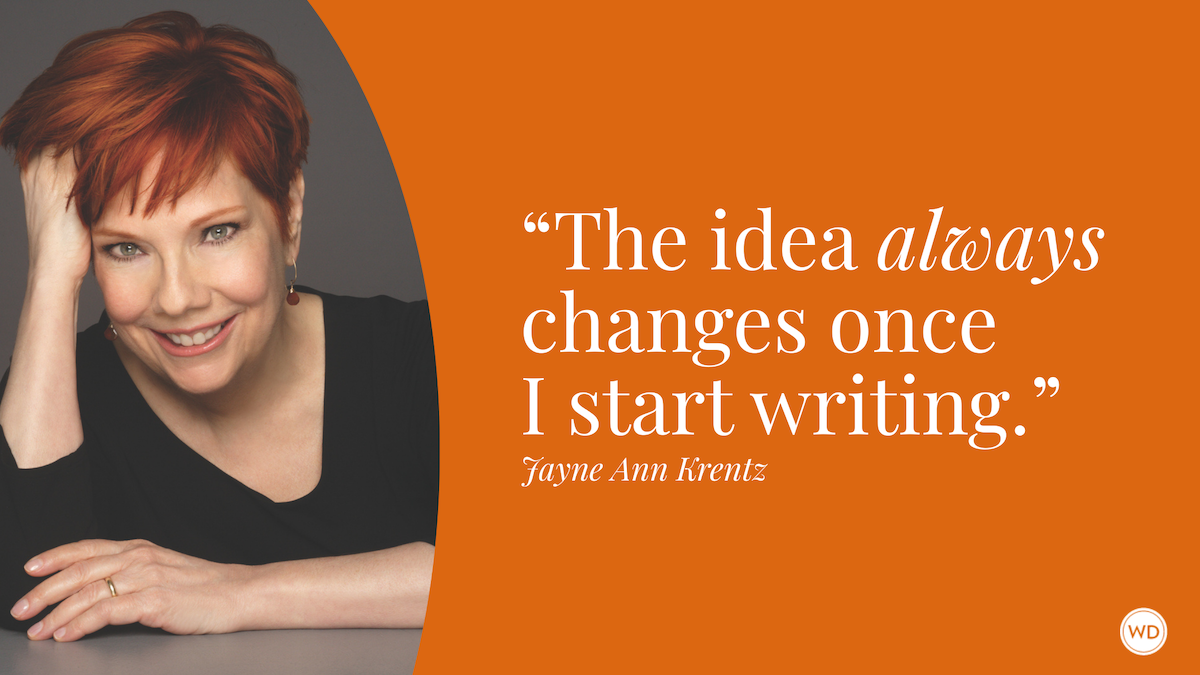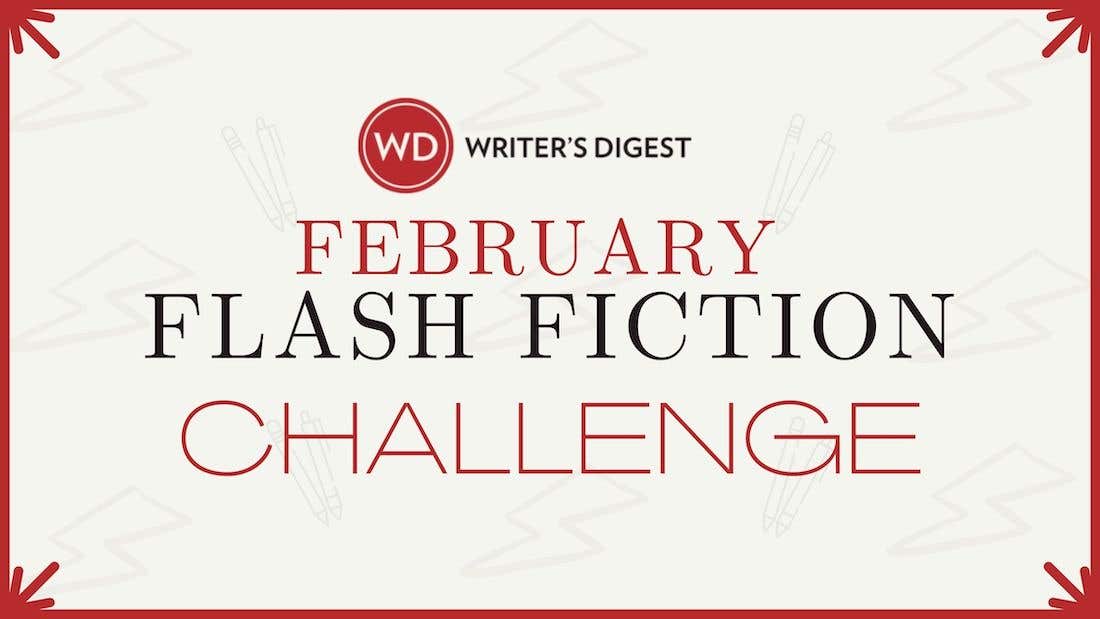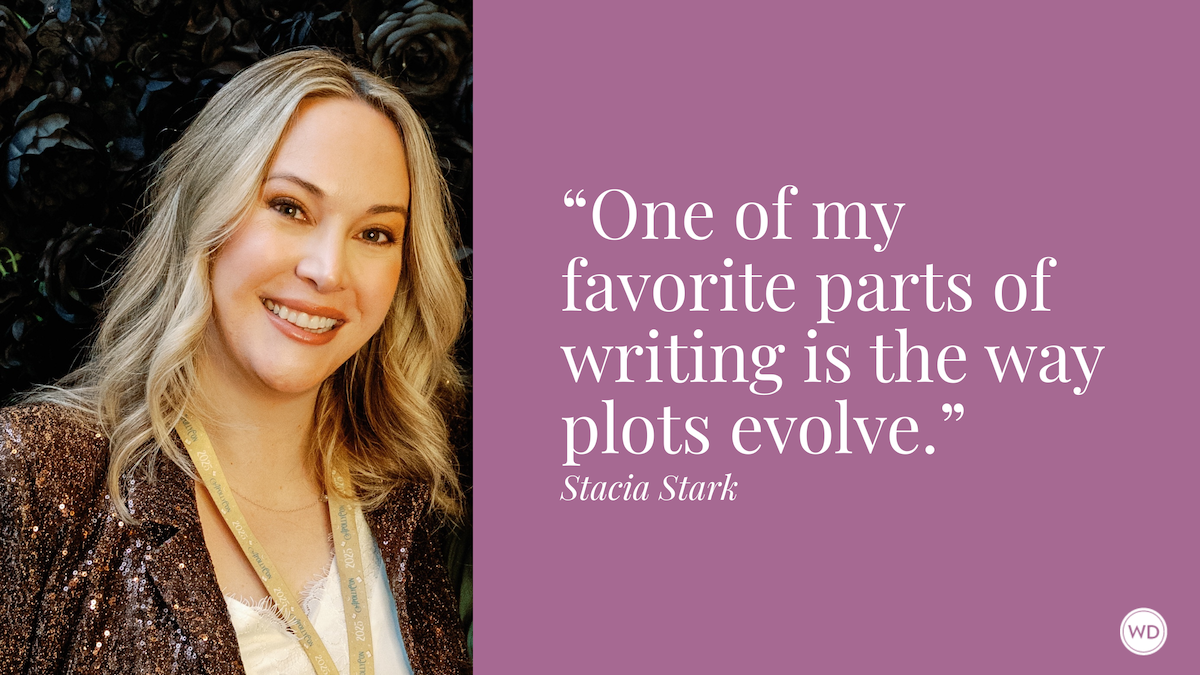How to Write Better Using Humor
It may sound funny, but it’s true: Humor is a great way to hook readers, no matter the subject. Here’s how to write better nonfiction simply by lightening the mood.
A man walks into a bookstore. “Where’s the self-help section?” he asks the clerk. She shrugs and replies, “If I tell you, won’t that defeat the purpose?” —Anonymous
Humor is an integral part of our everyday interactions, whether we’re trying to navigate a bookstore, make conversation with the barista at our favorite coffee shop, or talk a police officer out of a ticket. Our inherent desire to laugh motivates us to share funny YouTube videos and respond to text messages with an LOL or the iconic smiley face. Many of us even choose to get our daily news with a heaping side order of comedy from outlets like “The Daily Show,” “The Colbert Report” or The Onion. When push comes to punch, we’d rather laugh than lie facedown, weeping into the carpet.
You may think that when it comes to writing, humor is best used only in fiction or satire. But while we think of comedy in terms of exaggeration or fabrication, effective humor can be just as much about creative misdirection—engaging readers by taking them someplace they don’t expect to go—and subtly choosing metaphors and words that make readers giggle without even knowing why. And a smiling reader is one who’s paying attention and eager to read on.
Sociologists, linguists and biologists say that our ability to laugh and desire to do so isn’t all fun and games, but actually serves two essential life functions: to bond with members of our “tribe,” and to lessen tension and anxiety. Both of these are also excellent reasons to incorporate humor in your nonfiction. As a communication tool, effective use of humor can humanize you, cementing your bond with readers. It can also help your work stand out in a crowded market. And as advertising studies have shown, humor enhances how much we like what we’re reading and how well we remember it afterward.
I’ve been teaching humor writing for 16 years, and have used my funny bone in writing everything from self-help books to feature articles to essays to cookbook content. I’m convinced that learning to effectively use humor can not only enhance your work, but can make the act of writing more enjoyable, too. Trying to find the funnier side of things reduces the loneliness, rejection and stress of the writing life—and it boosts your creativity by challenging you to approach your craft in new ways.
Even if your subject is a serious one, the subtle use of humor can both ease tension and provide a respite from difficult moments. I was recently hired to provide freelance assistance on a book about pornography-related problems. The authors felt I could make the subject less uncomfortable for readers by lightening things up here and there. As Eric Idle once wisely said, “Levity is the opposite of gravity.”
So how can you use humor to write better? Read on to find out.
Learning the Basics of Subtle Humor
Let’s be clear: The goal in adding some humor to your nonfiction project is not about becoming the next Erma Bombeck or David Sedaris (unless that’s your dream). The goal is to improve your writing by using all the tools available to you, including comedy. Imagine where the original authors of the For Dummies book franchise would be today if they hadn’t decided to take a lighthearted approach.
Whether or not you consider yourself a funny person, it’s not as difficult as you—might think to put humor to work for you. I’ve found that the easiest and best ways of doing so boil down to five simple comedic tools.
1. THE K RULE
It may sound strange, but it’s true: Words with the k sound (Cadillac, quintuplet, sex) are perceived as the funniest, and words with a hard g (guacamole, gargantuan, Yugo) create almost as many grins. This may be because much of what makes Americans laugh today has roots in Yiddish humor, the language of which includes many guttural sounds—and the k and hard g are as close as English comes. The K Rule is so widely used by comedy writers that Matt Groening’s team once referenced it in an episode of “The Simpsons” when Sideshow Mel explained that Krusty (note spelling) the Clown had laryngitis from “trying to cram too many k sounds into a punch line.”
The K Rule is a good convention for naming things and making word choices that will subconsciously or subtly amuse your readers. This tool is especially handy in crafting attention-grabbing titles or subheads. Consider this memorable section heading in the book You Staying Young: The Owner’s Manual for Extending Your Warranty by Michael F. Roizen and Mehmet C. Oz: “Your Memory: Don’t Fuggedaboudit.”
2. THE RULE OF THREE
Writing comedically usually requires establishing a pattern (with the setup) and then misdirecting the reader (with the punch line). One simple way of doing this is to pair two like ideas in a list and then add a third, incongruent, idea. The reason we use a list of three, and not five or 27, is that three is the number of things we can most easily remember (two if we haven’t yet had our coffee or been tasered awake by our boss). Here’s an example of a sentence using the Rule of Three: Losing weight is simple: Eat less, exercise more and pay NASA to let you live in an anti-gravity chamber.
This is one of the most flexible ways to naturally incorporate humor into your narrative. It’s particularly useful in crafting catchy article ledes, like this opening paragraph from Jean Chatzky’s “Interest Rates Are Going Up. Now What?” in More:
Let me predict a few things that will happen in the next year. Brad and Angelina will add another baby to their brood. The day you spend $175 getting your hair done is the day it will rain. And the variable-interest rates—on your savings account, mortgage and credit card—will go up.
Here she uses two amusing, less important ideas as the pattern and throws in her point at the end, as the “punch.”
*****
Learn better by seeing examples? Check out Writer's Digest Tutorials, helpful videos designed to help you reach your writing goals. Enjoy this FREE preview and visit Writer's Digest Tutorials to learn more.
*****
3. THE COMPARISON JOKE
As writers, we’re comfortable with metaphors, so think of comparison jokes as simply metaphors chosen specifically for comedic effect. Here’s an example from the late Robert Schimmel’s memoir Cancer on $5 a Day* (*Chemo Not Included):
… this stupid hospital gown is riding up my ass. I try to pull it down and it snaps right back up like a window shade. I cross my legs and suddenly I’m Sharon Stone.
To craft a comparison joke, simply brainstorm metaphors and then choose the one that is funniest and makes the point well. For example, if you want to convey that quitting smoking is difficult, you might first mentally list things that are tough, such as reading without your glasses, flossing a cat’s teeth, getting a teen to tell you about his day, getting a cat to tell you about its day while flossing its teeth, etc. Then, simply choose the comparison that makes you laugh. In comedy writing, we’re always our first audience.
4. THE CLICHÉ JOKE
If comedy relies on misdirection, what better way to achieve it than with a phrase your readers already know? If you write, “You can lead a horse to water …” every reader will assume you’re going to finish with “… but you can’t make him drink.” Taking the cliché elsewhere can be both attention-grabbing and amusing. Take the title of Sarah Snell Cooke’s Credit Union Times article about a credit union initiative dubbed THINK: “You Can Lead a Horse to Water But You Can’t Make Him THINK.”
Don’t limit yourself to old idioms: Cliché jokes can work with any widely known catchphrase, title, lyric or piece of literature (say, Dr. Seuss). Lyla Blake Ward’s book How to Succeed at Aging Without Really Dying, for example, is titled with a play on the well-known musical How to Succeed in Business Without Really Trying. You also don’t need to confine your creativity to just replacing a word or two. Taking a cliché and expanding upon it is another useful approach. For example, on Lauren Kessler’s companion blog to her latest book, My Teenage Werewolf, she writes:
I will always, always have your back. That’s the one message above all other messages (even the I love you message) that I want Lizzie and my two sons to hear. … How do I manage to send that message and not simultaneously send this one: I am available, at your beck and call, 24/7.Don’t even think about what else I might have on my plate or who I am as a person in addition to being your mother. I have no life other than to serve you.
5. FUNNY ANECDOTES AND STORIES
Most of the things we laugh at in real life are true stories, sometimes exaggerated for effect. In fact, experts say we laugh far more at these types of everyday happenings than at “jokes.” It makes sense, then, to use them to help illustrate your points as you write. When Your Money or Your Life authors Joe Dominguez and Vicki Robin wanted to demonstrate the importance of changing the way we think about money, they did so by telling the story of a young girl watching her mother prepare a ham to bake for dinner. As the mother cut both ends off the ham, the daughter asked why. Mom replied that her mother had always done it that way. When the daughter still insisted on knowing why, a quick call to grandma revealed the reason: “Because the pan was too small.”
Putting It Into Practice
Now you’ve got five basic comedic tools in your arsenal, and you’re ready to put them to use in your work. As with trying anything new, you don’t want to overdo it and come on too strong, but you don’t want to stifle your creativity, either. Here are five ways to effectively apply what you’ve learned to any kind of nonfiction work:
1. BE STRATEGIC. Don’t scatter jokes willy-nilly; instead, think of humor as parenthetical information. Many nonfiction writers find the best places to integrate humor are in titles, sidebars, visual illustrations or cartoons, and anecdotes to illustrate their points. For a great example of the use of visual humor, see Roizen and Oz’s You Staying Young.
2. USE IT SPARINGLY. Unless you’re writing about an inherently funny topic, you should limit the humor you use to selective references. Its purpose is to grab the reader’s attention and help you make points in creative ways. Don’t confuse the reader by coming across as a comedian.
3. KEEP YOUR FOCUS IN MIND. Be sure your use of humor doesn’t distract from or demean the true purpose of your project. Have someone read your manuscript and then give you a candid critique with this in mind.
4. LET YOUR READERS KNOW YOU’RE LAUGHING. When using humor in writing about a difficult subject—your own illness, for example—your first responsibility is to give your readers permission to laugh. Find subtle ways to let them know that not only is it OK to laugh, but you want them to.
5. STEER CLEAR OF SARCASM. This humor style may work in some arenas, but many readers find it hurtful and mean, and because it often relies on tone, it can be especially hard to pull off in writing. Sarcasm is a tool most of us pick up at a young age as a way of feeling better about ourselves by putting others down. I recommend leaving it there.
As writers, it’s up to us to use everything we can to make sure we lasso our readers and keep them in the corral. Don’t let fear of being funny on the page hold you back. After all, I wasn’t class clown in high school. In fact, had there been such a category, I would have been voted Most Likely to Depress People (Sylvia Plath and Edgar Allan Poe were my role models). But I’ve learned that an old saying is true: “If you can get them to open their mouths to laugh, you can get them to open their hearts to learn.” And that makes for effective writing.
*****
Whether you write fiction, nonfiction, self-help books or blogs, adding humor to your writing is an excellent way to endear yourself to your audience. Brian A. Klems shares 8 simple ways to write funnier and does it with his usual high-energy, smile-inducing style.
Leigh Anne Jasheway is a stress management and humor expert, comedy writer, stand-up comic, and comedy instructor/coach. She has an M.P.H. degree which is either stands for masters of public health or mistress of public humor She consults with organizations on how to use humor to manage stress, change, and conflict, and boost creativity, teamwork and morale. In 2003, she won the Erma Bombeck Award for Humor Writing, has 21 published books and has hosted two radio programs, Women Under the Influence of Laughter, on KOPT AM in Eugene, Oregon and the Giggle Spot, on All Comedy 1450. She also teaches comedy writing and stand-up and is a part-time faculty member at the University of Oregon School of Journalism and Communications. Follow her @lajfun and accidentalcomic.com.









